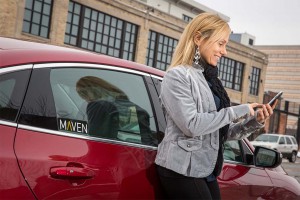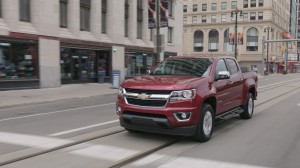General Motors plans to pull its Maven car-sharing service out of eight cities in North America, including Boston and Chicago, while continuing to focus on markets with stronger demand, including Toronto, Los Angeles and GM’s home in Detroit.
The move comes just months after Ford Motor Co., which has tried to reposition itself as a “mobility” company, rather than an automaker, pulled the plug on Chariot, a service struggling to find a niche between ride-sharing and van shuttles.
GM declined to explain why it decided to trim back Maven but said in a statement that, “We’re shifting Maven’s offerings to concentrate on markets in which we have the strongest current demand and growth potential.”
Until recently, many observers expected the Detroit automaker to expand both Maven’s business model and its geographic reach by adding ride-sharing services centered around the autonomous vehicles being developed by another GM subsidiary, San Francisco-based Cruise Automation.
(General Motors debuts new digital for future vehicles. Click Here for the story.)

GM's car-sharing service, Maven, was expected to continue its expansion this year, but instead pulled out of eight markets.
While many analysts anticipate that the “sharing economy” will lead to massive change in the transportation business, the shift has so far been anything but profitable. Other car-sharing services, such as European-based Car2Go, have struggled for years. Ride-sharing giants Uber and Lyft have fared poorly on Wall Street since staging IPOs this year.
It hasn’t helped that neither company has been able to lay out a clear path to profitability, according to analysts. For its part, Uber is expected to announced a deficit of between $1 billion and $1.11 billion for the first quarter, up from a $478 million loss during the same period a year ago – even though revenues jumped 19%, to $3.1 billion.
Maven made its debut in 2016, part of a broad mobility services plan laid out by GM CEO Mary Barra and then-President Dan Ammann – the latter executive since then moving over to Cruise as its own chief executive.
In its initial form, it targeted apartment dwellers in places like New York and Chicago who didn’t own cars but who might occasionally have a need for one. The concept was broadened to allow owners of GM vehicles participate by offering them for short-term loans. The concept was enabled by GM’s oldest mobility venture, OnStar, which used its telematics system to link customer and vehicle owners via smartphone apps.
GM officials have stressed that the company is in the early stages of exploring its mobility service options. It recently scrubbed a subscription program that allowed Cadillac buyers in a handful of cities to pay a set monthly fee and then swap out among a variety of different models, as the need – or mood – arose. It plans to relaunch some alternative in the future.
(Click Here for more about GM’s plans to expand Maven last fall.)
Some of the problems with Maven, according to news reports over the last couple years, appear to have been technical. In areas with weak service customers occasionally were unable to access a vehicle using a smartphone, for one thing.
Whatever the reason, with demand for Maven lagging in at least some of the markets being eliminated, the project has faced a fair bit of turmoil. Among other things, the units CEO, 43-year-old Julia Steyn, left the subsidiary “by mutual agreement” in January.
Where Maven goes next is uncertain. The same can be said for the autonomous ride-sharing operation that Cruise CEO Ammann and others at GM have promised to launch this coming year. It is possible, according to several observers, that the automaker could introduce it under an alternative name, perhaps to avoid confusing potential customers.
GM and Cruise are considered to be close behind Waymo, the Google spinoff widely seen as the leader in autonomous technology. That company launched its own ride-sharing service in December in the Phoenix area and has indicated it will begin to roll out to as many as 20 other markets using modified Chrysler Pacifica Hybrid minivans and all-electric Jaguar I-Pace SUVs.
(To see more about GM investing $1 billion into its Missouri plant, Click Here.)
For the moment, however, the vehicles already in use still have back-up drivers onboard ready to take control in an emergency. GM has not offered details of how it plans to run its ride-sharing service.



The next CEOs of GM and Ford will appear brilliant when they decide that their business plan is to make cars the people want to buy!